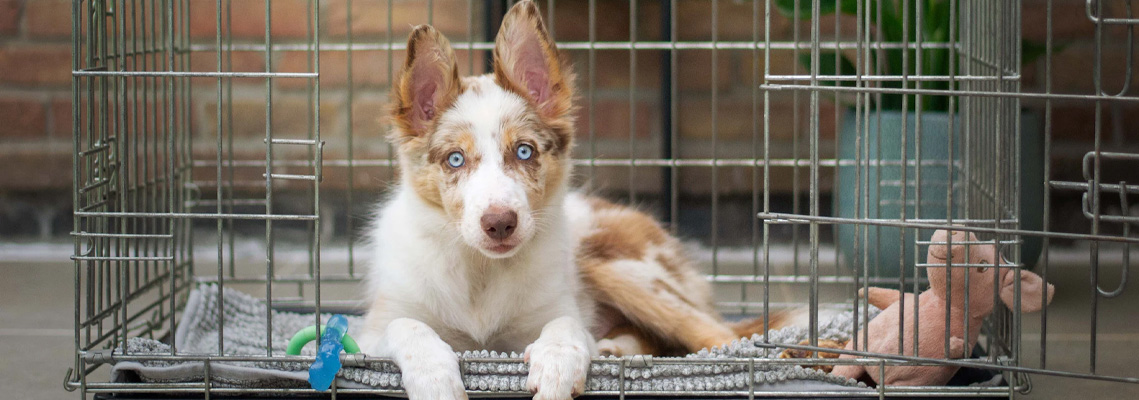
Photo by Ayla Verschueren
How do you prepare your pets for emergencies and disasters?
If you're a pet owner, you know that your furry, feathered, or scaly friend is part of the family. But what would you do if an emergency or natural disaster struck and you had to evacuate your home? Planning ahead is key to keeping your pets safe in an emergency. It could be the difference between life and death. Here are a few things to keep in mind when preparing your pets for an emergency:
Microchips, Microchips, Microchips
Microchips are a safe, permanent way to identify your pets in case they get lost. If someone finds your pet, they can take them to a vet or animal shelter, where they will scan the microchip to get your contact information.
This is much safer than relying on ID tags, which can fall off or be removed. In addition, microchips can help you prepare for emergencies and disasters. If you need to evacuate, you can have peace of mind knowing that your pets can be safely identified by people. And if something happens to you, your pets can be easily located and turned over to a responsible party. Microchips are a simple and effective way to keep your pets safe – both in everyday life and during times of crisis.
Prepare an Emergency Kit in Advance
One of the best ways to keep your pets safe and healthy in emergencies is to prepare an emergency kit for them before disasters strike. This will help you keep your pets safe and comfortable in an emergency.
In the kit, ensure to include the following items:
- A supply of food and water for at least three days
- A bowl or container for the food and water
- A leash, harness, or carrier
- Any medications your pet takes on a regular basis
- First aid supplies
- An up-to-date photo of your pet in case they get lost
By having an emergency kit ready, you'll be prepared with everything you need to take care of them, including food, water, medication, and supplies. You should also consider getting a storage container that is easy to transport and large enough to hold everything your pet needs in case you need to evacuate your home. This could be a new or second-hand shipping container or even a storage tote.
Familiarize Your Pets With Their Carriers
If you have to evacuate, you'll need to transport your pets in carriers. If they're not used to being in a carrier, it can be a stressful experience for both of you. To ensure your pets are comfortable in their carriers, get them used to spending time in the carrier well before an emergency strikes. Put their carrier in a familiar place in your home and let them explore it on their own. You can also feed them meals or treats in their carrier to create a positive association.
Familiarize Yourself With Evacuation Routes and Pet-Friendly Shelters
Knowing where to go and how to get there during an emergency can make all the difference for you and your pets, especially if you live in an area prone to natural disasters, such as hurricanes, floods, or wildfires. Remember, every second counts in the event of an emergency, so it's essential to have a plan in place before disaster strikes.
Start by familiarizing yourself with your local evacuation routes and map out the quickest and safest route to take should you need to evacuate. If possible, choose a destination that's outside of the disaster area.
Carry Out Emergency Drills With Your Pet
Many pets are injured or even worse, die during emergencies and natural disasters because they're not used to being in unfamiliar environments. To help your pets feel more comfortable and confident in emergencies, it's essential to carry out regular emergency drills with them. This will help them get used to the idea of evacuating and going to a new place. It also helps to reduce their stress levels in the event of an actual emergency.
When carrying out emergency drills with your pet, it's essential to make them as realistic as possible. This means using the same carrier or leash that you would use in an actual evacuation. If your pet is resistant to the carrier, try putting their favorite toy or treat inside to entice them. And if possible, take them to a safe location outside your home so they can get used to the idea of being in new surroundings.
Choose a Safe Place to Meet
If you're ever separated from your pet during an emergency, it's crucial to have a safe place to meet. Choose a spot that's easily accessible and familiar to you and your pet. If possible, choose a location that's outside of the disaster area. This will help you avoid potential danger and make it easier to find each other if you get separated.
Remember, Being Prepared is the Key
Preparing your pet for an emergency situation is essential to being a responsible and caring pet owner. By putting together an emergency kit, familiarizing yourself with evacuation routes, and carrying out regular emergency drills, you can keep your pets safe in the event of a disaster.
Author’s bio
Ruth Riley is an educator and writer. She teaches linguistics to college students and also conducts studies about CBD at CBDClinicals.com. She also lends her knowledge as a woman and an educator by writing for Motherhood Community.
Updated September 14, 2022









